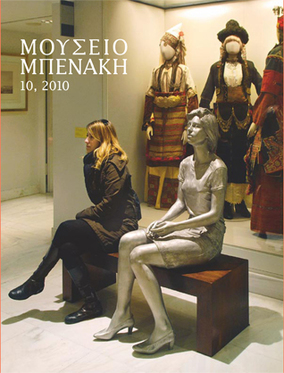Ψηφιακή αναπαραγωγή συµπληρώσεων σε χάρτινες στερεοσκοπικές διαφάνειες
Part of : Μουσείο Μπενάκη ; Vol.10, 2010, pages 137-159
Issue:
Pages:
137-159
Parallel Title:
The Use of Digitally Produced In-Fills for the Restoration of Paper Stereo Transparencies
Section Title:
Articles
Author:
Abstract:
Paper stereo transparencies known as “French tissues” represent an important step in the history of imaging. They can be regarded as an early link between still photography and motion pictures. The general idea behind a “French tissue” photograph was to be able to see a monochrome image with reflected light and then, using transmitted light and a viewing device, to see the same image in colour. The viewing device was also used to give a three-dimensional effect, like that seen in other types of stereo cards.The novelty and mystery of these images, like the “Diableries” (narrative scenes with the devil and hell) and theatrical subjects, made “French tissues” a very popular entertainment in the second half of the nineteenth century. Their structure is very complex: an albumen print hand painted on the back in watercolour, a piece of tissue paper and two cut-out window mats. The structure in layers of this format makes both the albumen print and the tissue paper vulnerable to physical damage. Furthermore, the need to use a viewer in order to appreciate the colours of the image has very often resulted in tears and losses to the albumen print. As is immediately apparent this sort of damages is highly visible and disturbing especially when the object is seen in transmitted light. The objective of this paper is to investigate the use of digitally produced in-fills in restoring the paper stereo transparencies belonging to the collection of the Benaki Museum as an alternative repair method. Given that pigments and dyes have been commonly used in toning applications, ink-jet printing could constitute a possible alternative to traditional methods of filling losses. A comparative study has been conducted on a selection of papers (Epson Premium Photo paper, Renaissance paper, Photosafe) in relation to their archival quality and compatibility to the original in terms of thickness, weight and texture. Especially with paper stereo transparencies, it is important to consider the density compatibility of the filler as it will effect the translucency of the image in transmitted light. For this purpose the samples and the originals have been measured in a densitometer with transmitted light and the most appropriate paper has been chosen. The application of a variety of coatings on the selected papers in order to achieve tonal compatibility with the original was also tested.
Subject:
Subject (LC):




